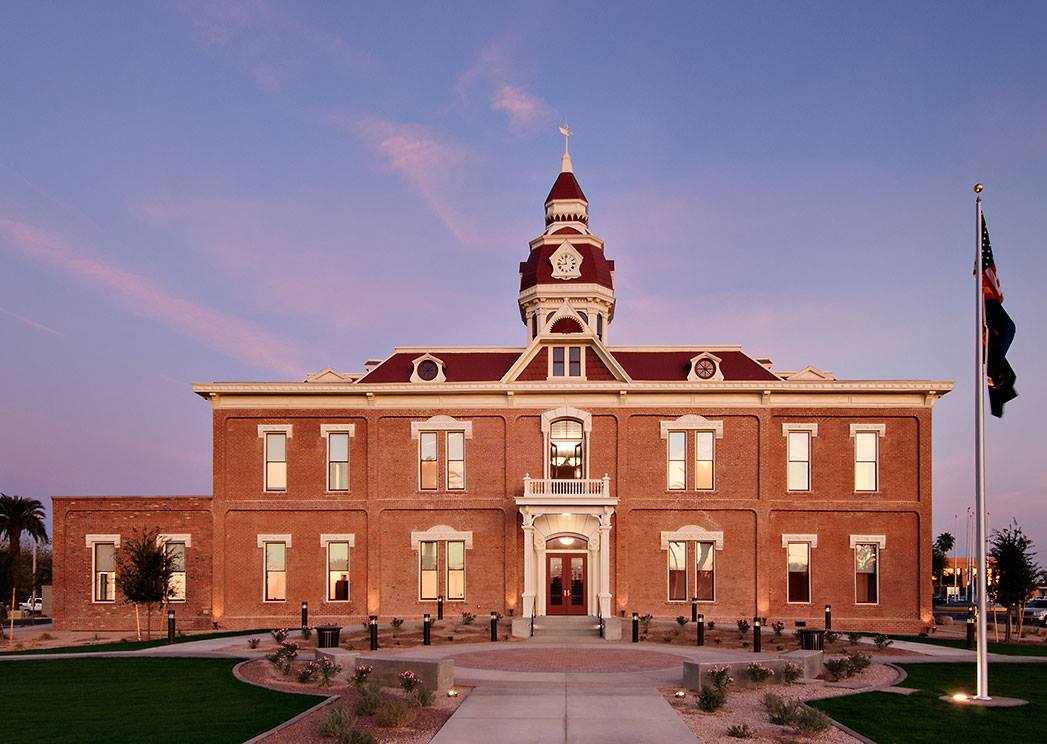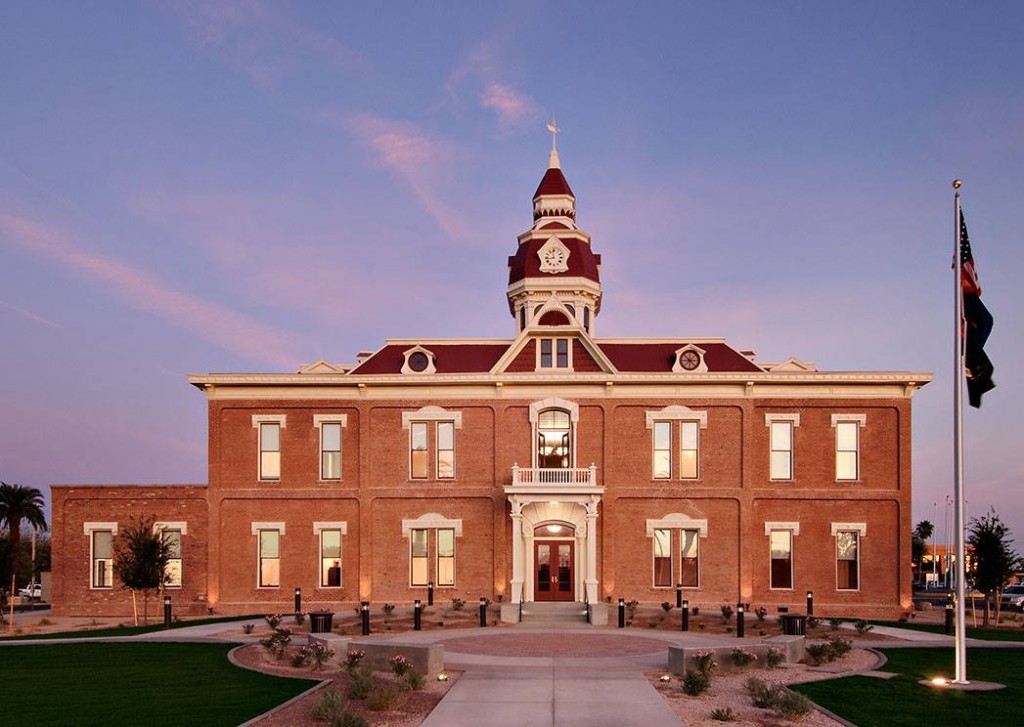[Source: Bonnie Bariola, TriValleyCentral.com] – The 1891 Second Pinal County Courthouse Rehabilitation collected another honor Saturday as it received the Crescordia Award for Buildings and Structures/Historic Preservation. “We are so pleased to receive this recognition from Arizona Forward and from Governor Brewer,” Pinal County Board of Supervisors’ Chairman Steve Miller said. “Not only is it a functional county office building, it’s also a tourist attraction. Practically every business day we have tourists and history buffs stop in to see the building. They all remark about how wonderful it is to see this significant landmark restored and in use.”
The 33rd Annual Environmental Excellence Awards were presented Saturday at the Phoenician Resort in Scottsdale. Arizona Forward’s membership is diverse and includes Arizona’s most prominent large corporations and small businesses, municipalities and other government agencies, educators, nonprofits, and a host of concerned citizens. A professional panel of judges identified a maximum of two Awards of Merit and one coveted First-Place Crescordia winner in each category.
Arizona Forward’s members focus on a balance between environmental quality and economic vitality, helping to ensure that decisions about how residents will live tomorrow are made with foresight and imagination today. The courthouse was built in 1891 and is a remarkable example of the American-Victorian style of 19th-century construction technology on the Southwestern frontier. The courthouse is listed on the National Register of Historic Places and is considered one of Arizona’s most irreplaceable historic properties. It is believed to be Arizona’s oldest government building in use today.
To rehabilitate it to serve as a modern office building for the Pinal County Board of Supervisors was no small task. Extensive planning and creative design were paramount to the sensitive integration of sustainable materials and high efficiency mechanical, plumbing, electrical and life-safety systems. Some of the key environmentally-friendly features include reused and recycled bricks, flooring, doors and windows; retrofitted original window frames with insulated low-emissivity glass; filtered roller shades to maximize daylight; strategically placed trees to maximize natural ventilation; low-water-use plumbing fixtures; and high-efficiency water heaters and lighting features, as well as a programmable lighting system. The 1891 courthouse is a physical reminder of the early development and maturation of Pinal County and is a symbol of pride to county residents and Florence. The courthouse attracts thousands of visitors each year, significantly benefiting local businesses.
Governor Jan Brewer awarded the renovation of the Historic 1891 Courthouse the grand prize at the Governor’s 2013 Historic Preservation Conference in June. Brewer and the Arizona Historic Advisory Commission had selected the courthouse renovation as a Centennial Legacy Project to celebrate Arizona’s statehood centennial in 2012.
Pinal County has compiled extensive documentation on the courthouse project and the history and lore of the building. To find out more about one of Arizona’s most distinctive historic public buildings, visit http://goo.gl/b9PRX.




You must be logged in to post a comment.